Invited To A Black Tie Event? Here's How To Ace This Tricky Dress Code
As wedding and graduation season sneak up on us, so do parties thrown to commemorate these milestones. Some parties are fancier than others and ask guests to dress to the nines. Here’s how to measure up every time.
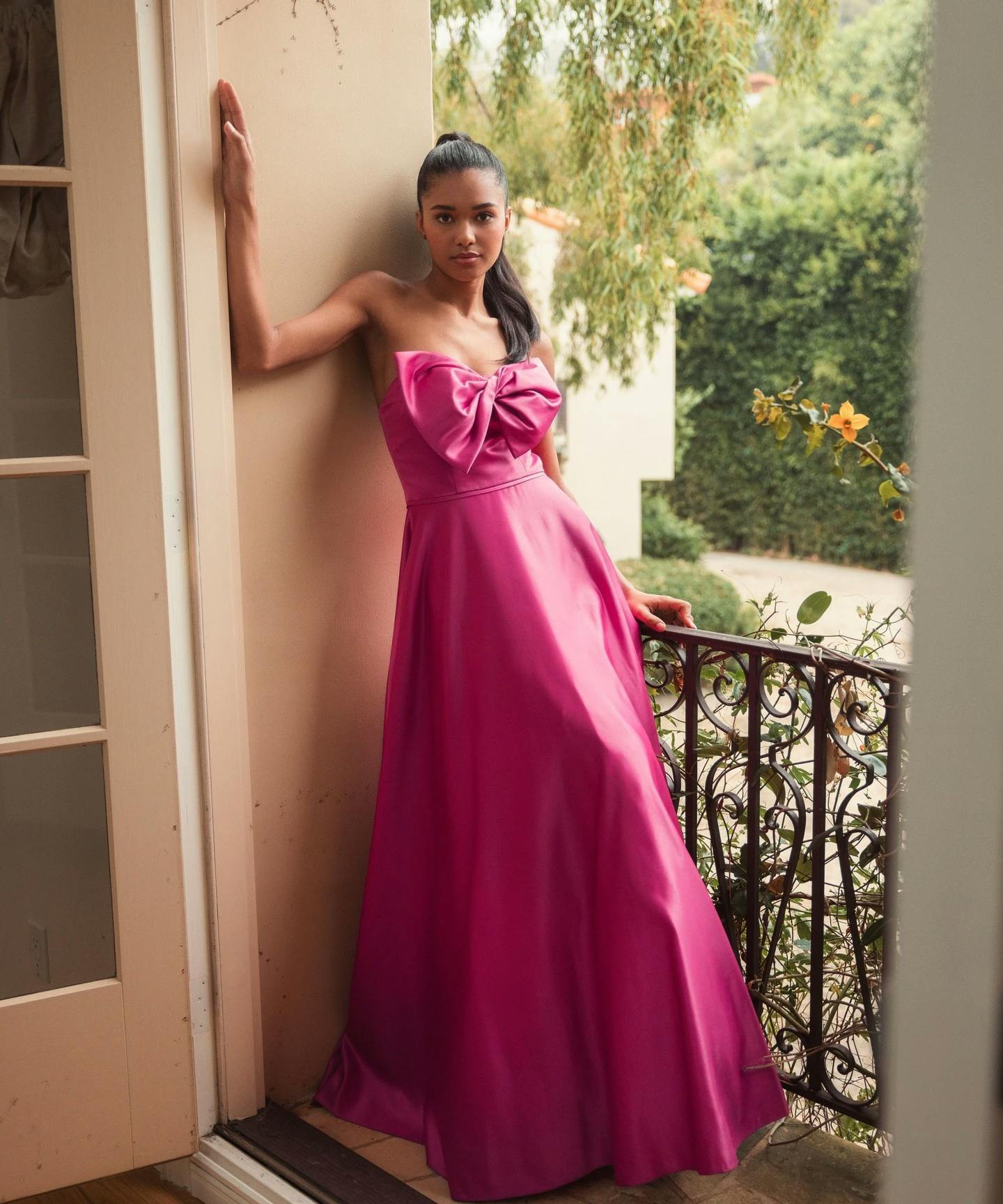
These days, it seems like there is an endless array of event dress codes to memorize and shop for: business casual, business formal, cocktail, evening. The list goes on and on. And no dress code is more commonly dreaded than black tie. While it was the nightly getup of well-bred families a hundred years ago, it’s now so obscure that few people actually know what “black tie” even means. Most guests groan when they read it on an invitation, dreading the anxiety that comes with looking for something suitable to wear.
Black tie attire is a straightforward uniform for men, but women aren’t as fortunate. There is an endless number of mistakes we can make: being too informal (common), being too formal (rare), or just disregarding the dress code entirely (inconsiderate to your host). Not every black tie event will adhere to the exact same rules, but following the generally accepted outline will help you show graciousness to your host and fellow guests. Not to mention, you’ll look fabulous while you do it.
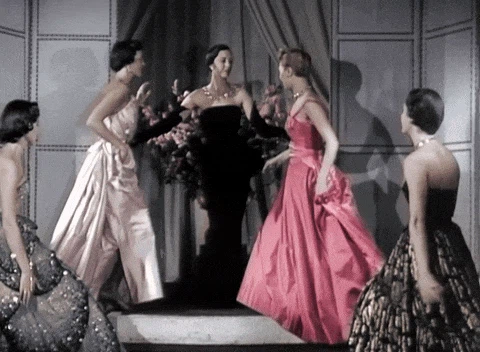
Evie's product selections are curated by the editorial team. If you buy something through our links, we may earn an affiliate commission, at no cost to you. We only recommend products we genuinely love.
What Actually Is Black Tie?
Believe it or not, when black tie dressing was first adopted at the beginning of the 20th century, it was actually seen as a more casual alternative to white tie, which was the previously accepted formal dress code. White tie attire meant a tailcoat, waistcoat, and a white bow tie for men, with women wearing opera gloves, princess gowns, and elaborate suites of jewelry, including tiaras. White tie is a pretty much extinct dress code these days, except for certain political dinners in Washington and social events in Europe.
Black tie attire has mostly taken white tie attire’s place as the ultimate formality in evening dressing. Men are asked to wear dinner jackets, tuxedo shirts, and black bow ties. The prescription for women is a bit murkier. According to Tatler, ladies should wear an “evening dress” with “ideally…a longer hemline” that looks “elegant.” In the words of legendary etiquette expert Emily Post, a “dressy cocktail dress” is also acceptable.
Generally, it’s agreed that the longer a gown is, the more formal the outfit, though you can go up to a midi length if desired. It’s also agreed that extreme cutouts and anything above the knee is an absolute no-no, though tasteful slits are okay. Since black tie is an evening dress code, daytime patterns like florals typically aren’t appropriate.
Here are some of our favorite feminine and black tie-approved gowns to don at your next special occasion, all available for under $400.
Mac Duggal Ruffle Tiered Soft Tie Halter Neck Gown, $398
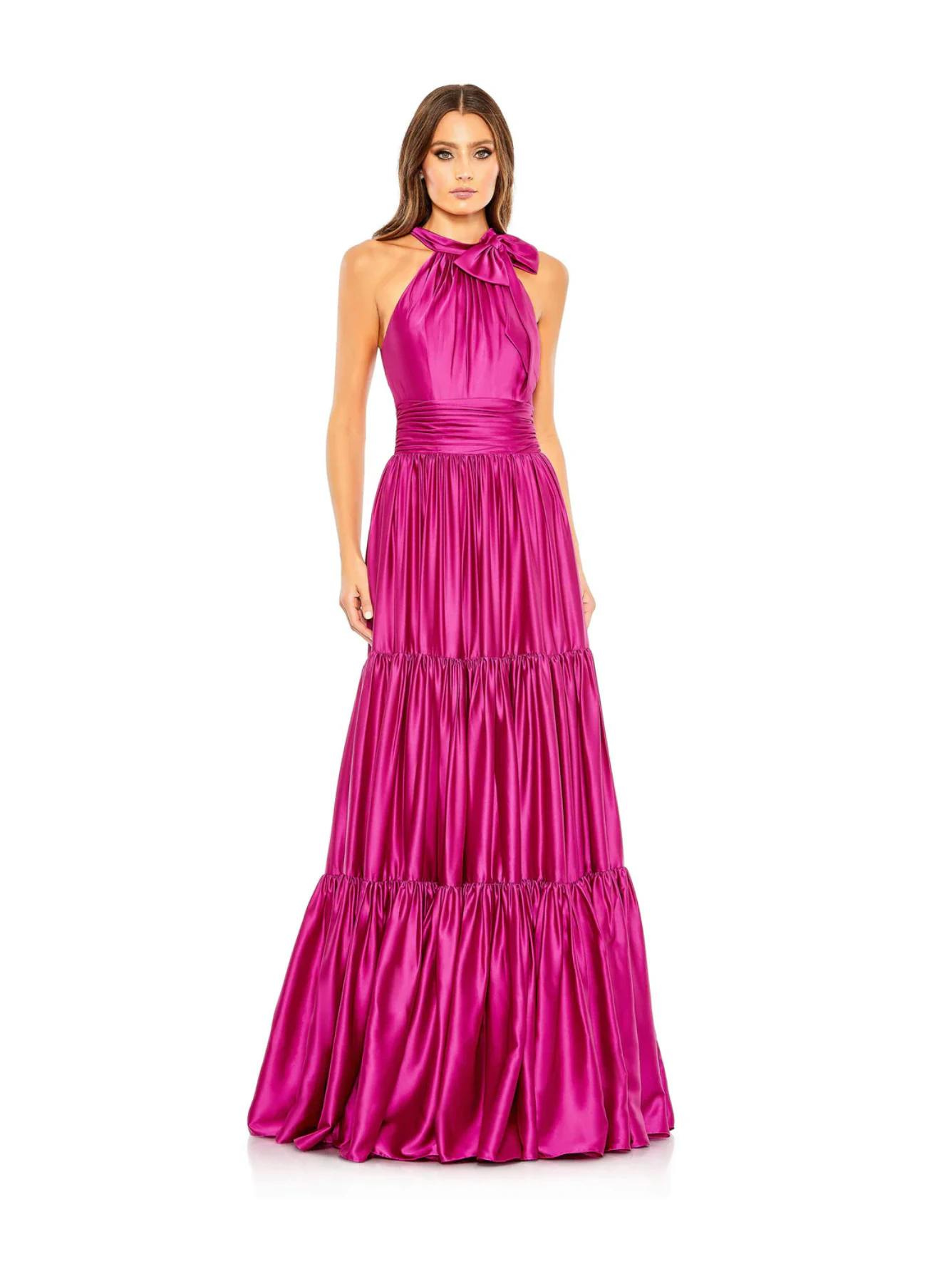
Alfred Sung Strapless A-Line Satin Slit Gown, $282
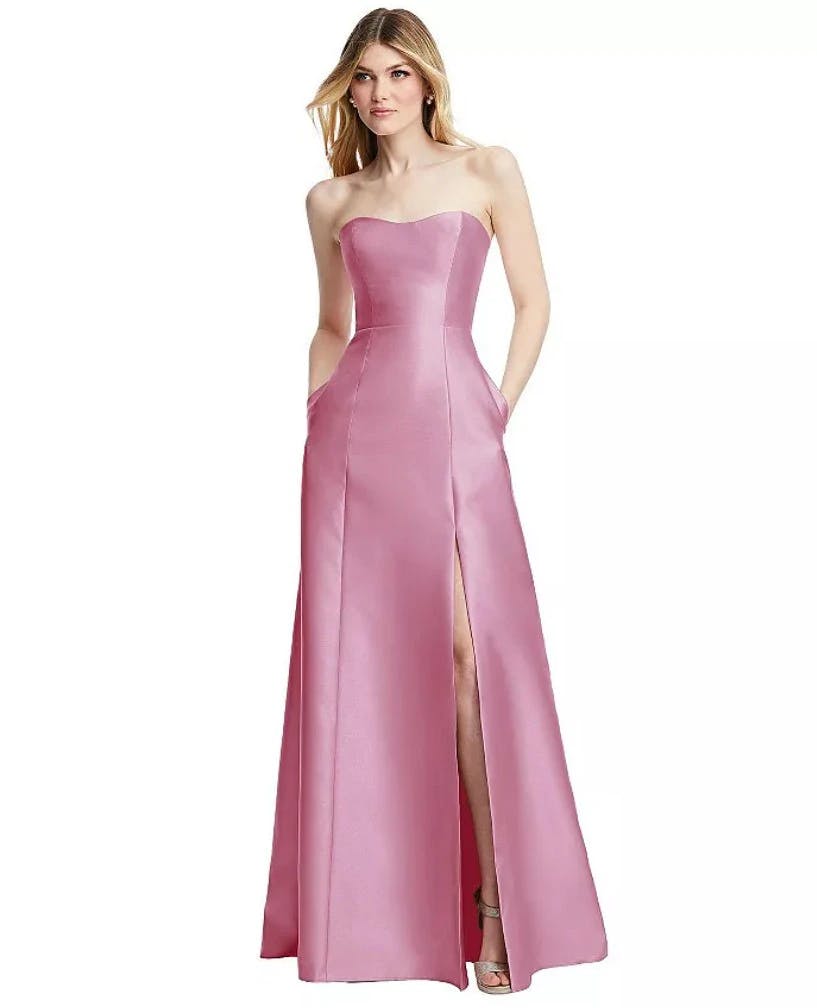
Mac Duggal Blush Ruffle Gown, $398
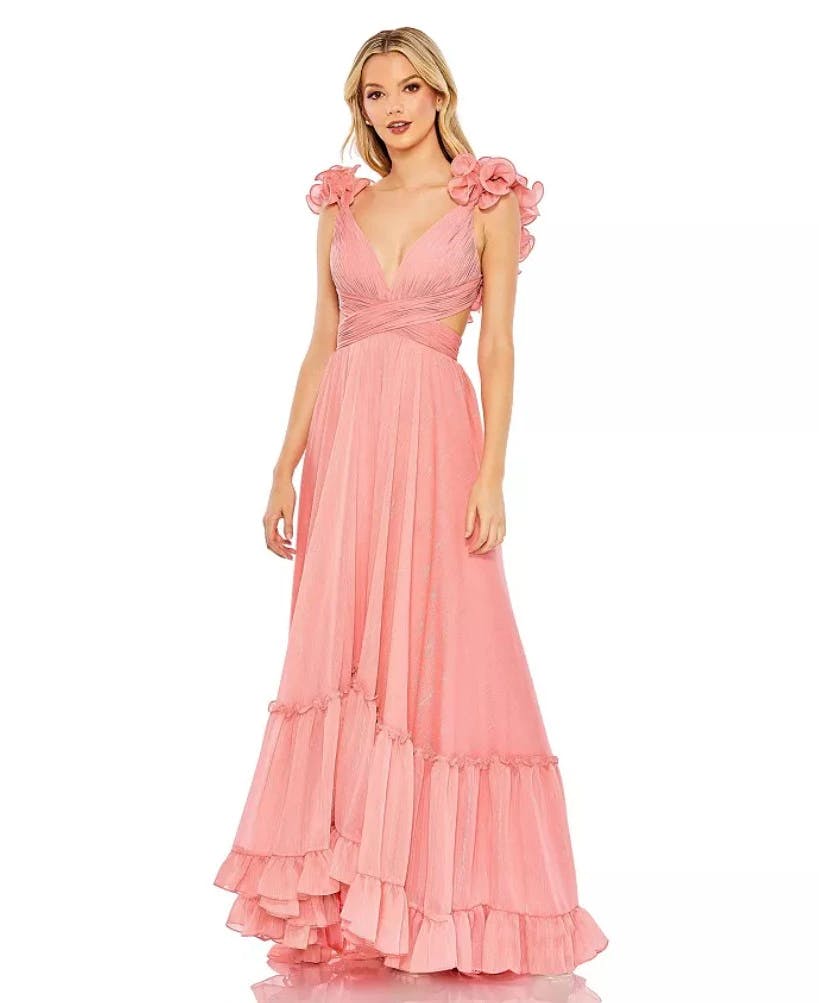
Eliza J Asymmetrical Blue Scuba Gown, $188
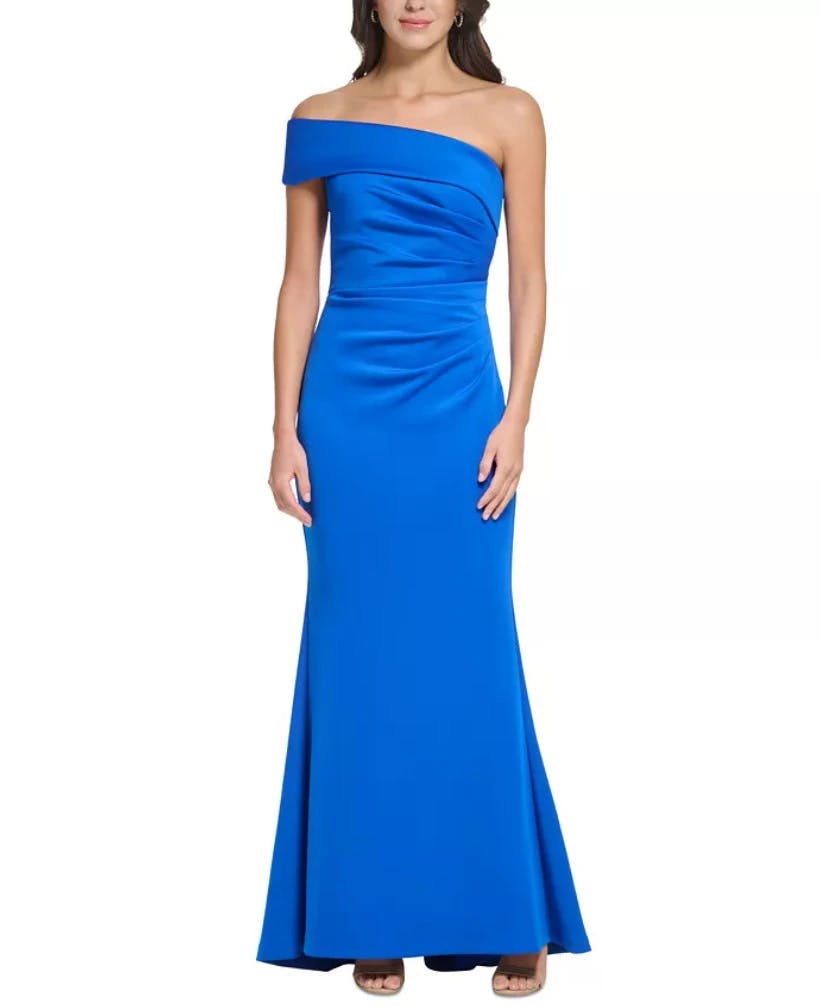
Mac Duggal Embellished Off-The-Shoulder Midi-Dress, $398
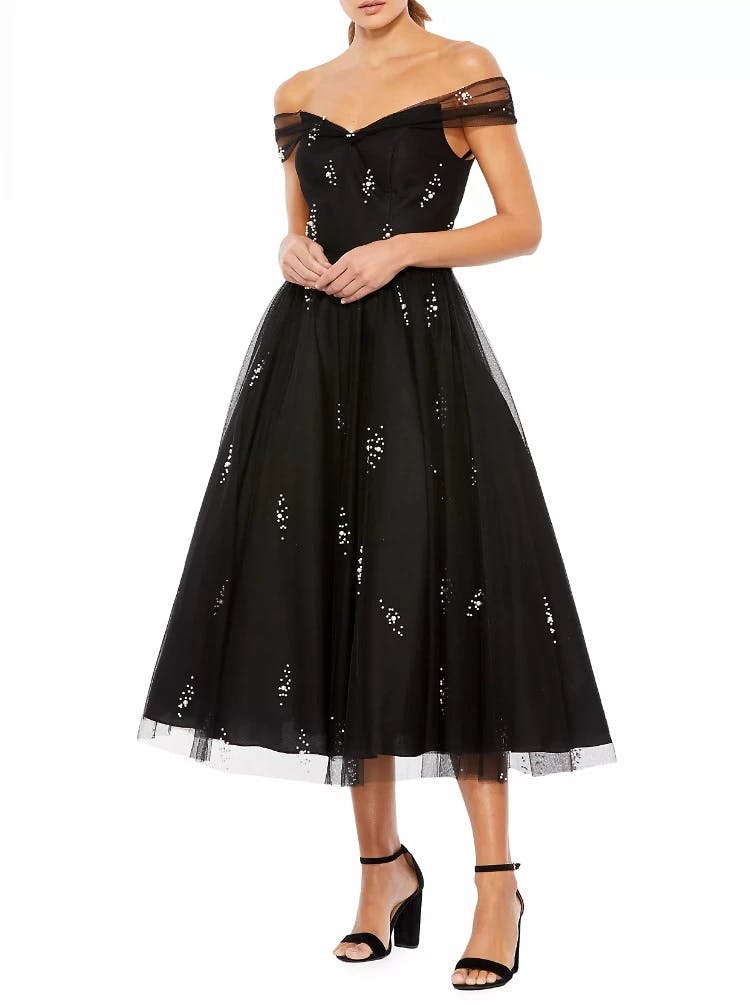
When it comes to shoe choice, heels or dressy flats are best. But if you choose to wear heels, don’t go for the tallest, narrowest pair you can find thinking they’ll make your outfit more “formal” – at least, not if you intend to dance the night away. Opt instead for a block heel with a sturdy base and ankle straps to keep you steady. Not even the strictest dress code is worth being in pain on the dance floor.
Badgley Mischka Louis Evening Sandals, $129
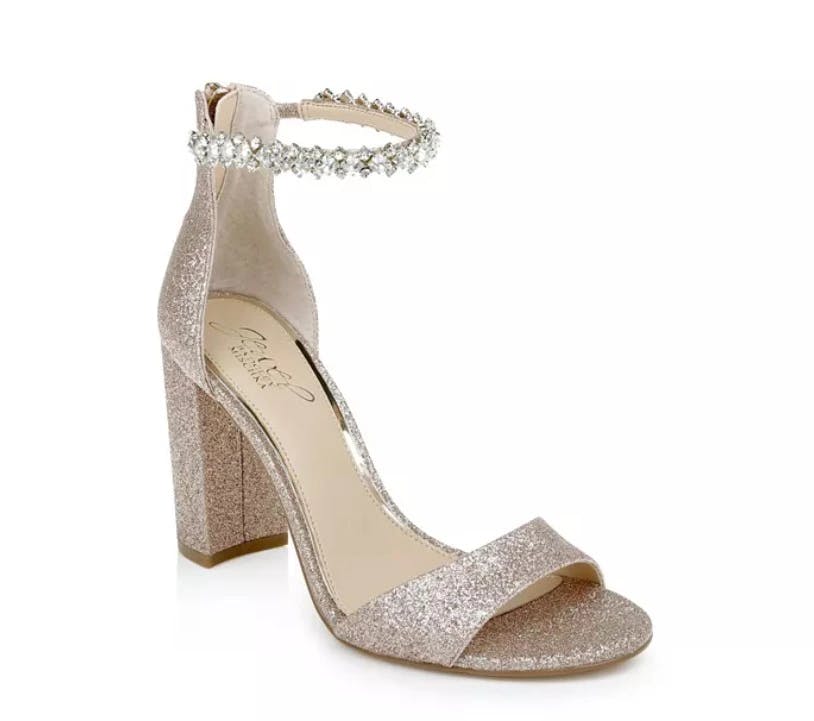
Sam Edelman Kia Block Heels, $120
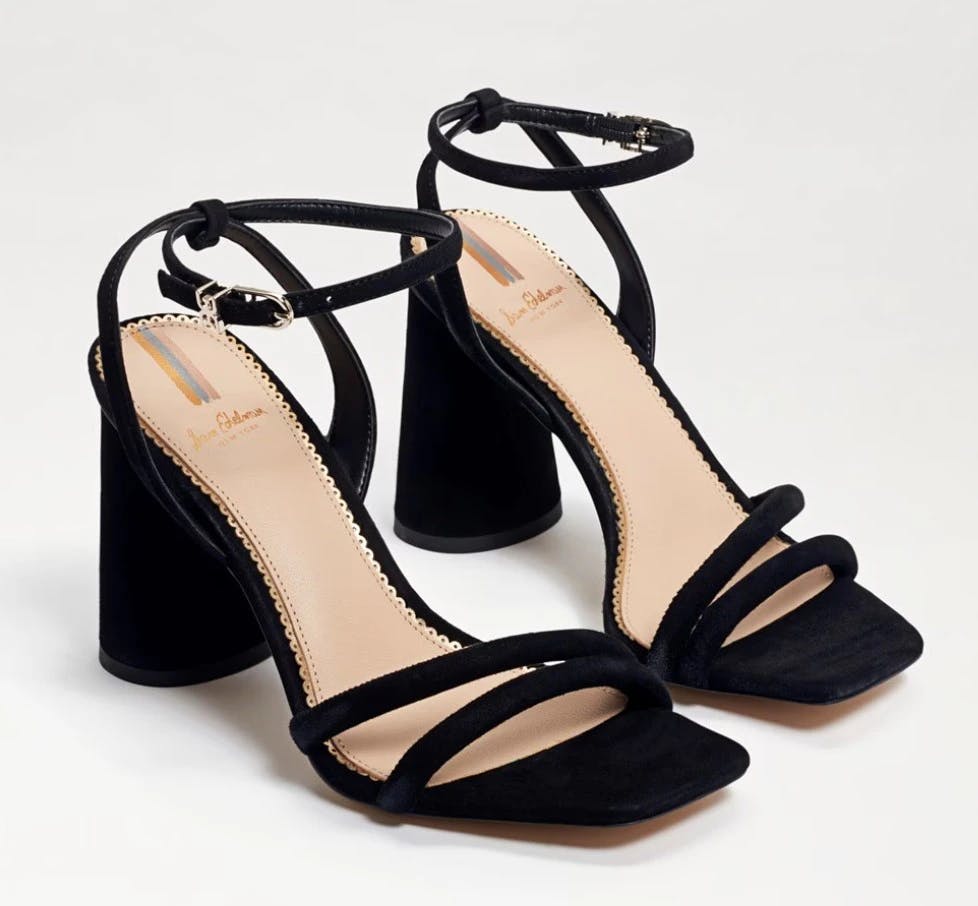
Strictly Black Tie vs. Black Tie Optional
Figuring out black tie can be enough of a headache, but when an invitation asks guests to dress in black tie optional, it sometimes feels like a confusing prank. So what does this really mean?
Black tie optional is usually the dress code that a host opts for when 1) they want to throw a dressy but still laid-back event, or 2) they want to throw a black tie event, but accept that not all of their guests own or are used to wearing full black tie attire. With this dress code, some of the traditional rules can be relaxed a bit. For example, you have more freedom to wear prints, and you can inch toward shorter hems. If you’re all about the glamor, feel free to stick to the traditional black tie route. But if not, you have some wiggle room.
The level of an event’s adherence to traditional black tie will also depend on the location and context of the event. If you’re attending a coastal gathering in California, you can probably ease up a bit. But if you’re flying to France for that one boujee cousin’s destination wedding, you’ll want to be more buttoned-up. When in doubt, you can always ask your host for clarification on just how formal they’d like you to dress.
If you want to look sophisticated while also giving off an air of effortlessness, here are our picks for jaw-dropping black tie *optional* dresses.
City Studios Floral Print Bustier Gown, $169
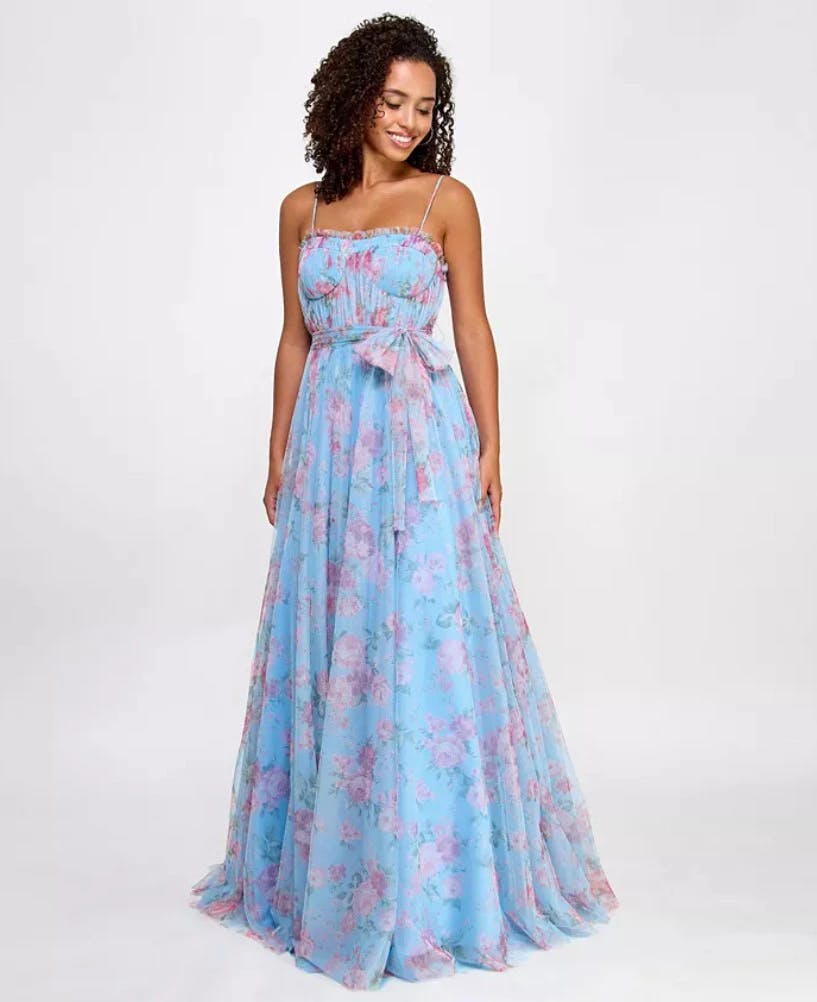
Mac Duggal Sequined V Neck Cap Sleeve Dress, $298
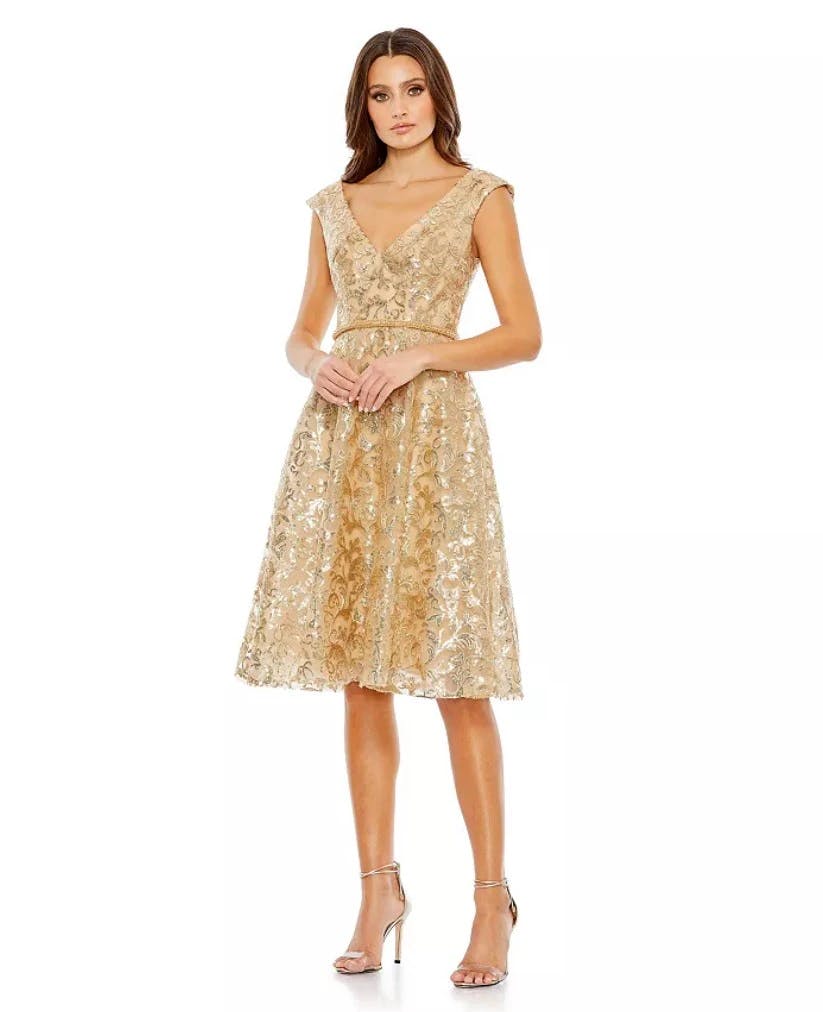
Mac Duggal Ieena Flutter Sleeve Cut Out Asymmetrical Ruffled Gown, $398
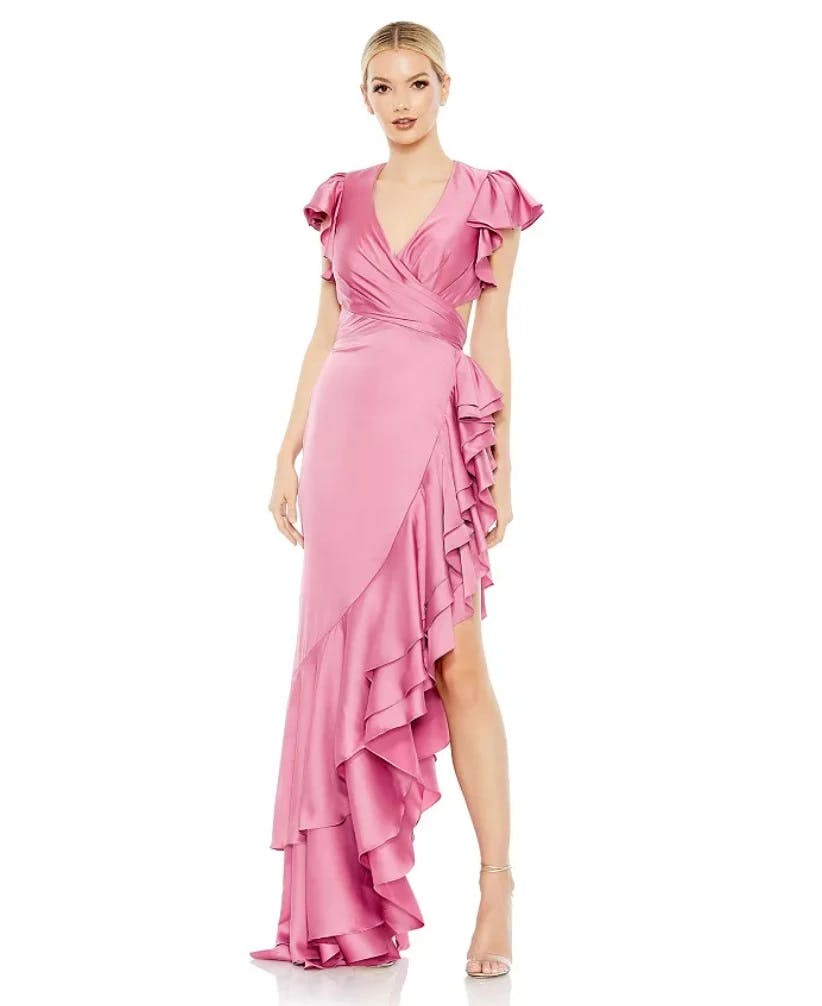
Alfred Sung Strapless Satin Column Mini Dress with Oversized Bow, $258
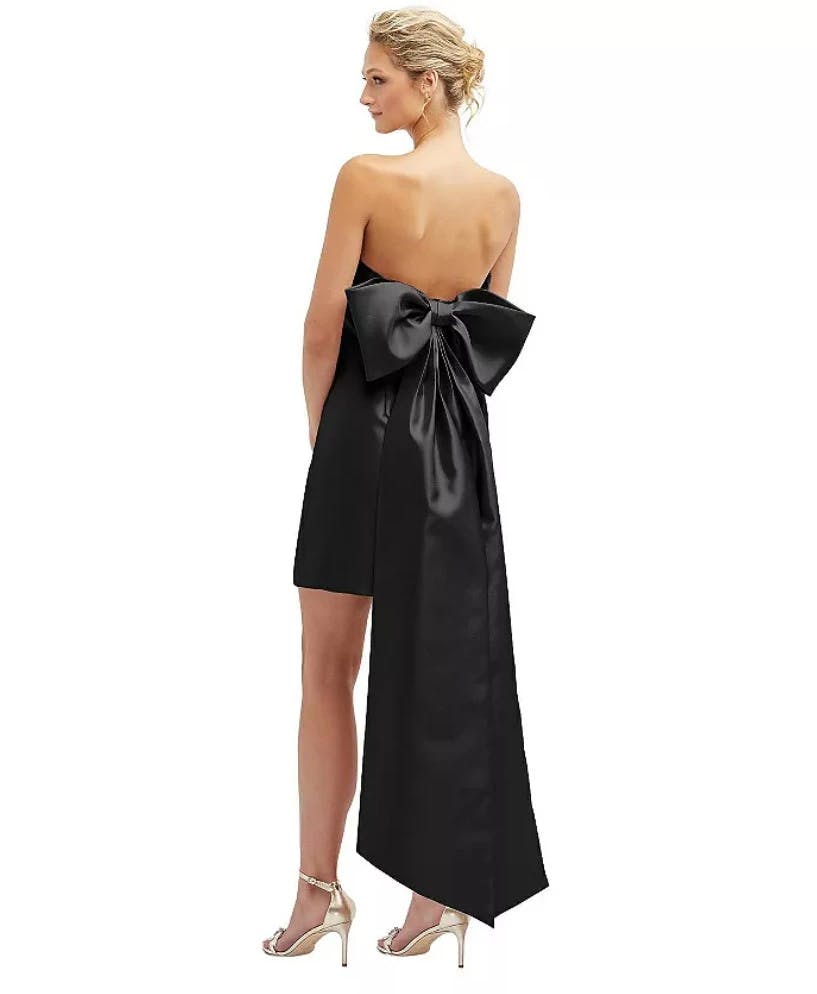
What Not To Wear
Since we’ve now established what the most obvious black tie misunderstandings are, we still need to address the subtler ones. The line between casual and formal attire blurs more and more each day, creating confusion about what’s appropriate for what kind of event. In my opinion, the number one culprit is the viral Skims slip dress. What was originally launched as a cute piece of loungewear has come to be interpreted by some as formalwear, but trust me on this one, it’s not. Feel free to wear your Skims to brunch with the girls, but leave it in the closet for a black tie affair.
A faux pas you might make in good faith is accidentally dressing too formally. While black tie attire calls for gowns, heels, and jewels, it’s best to steer clear from accessories associated with the more formal white tie dress code, like opera gloves and elaborate headpieces (especially if you’ll be rubbing shoulders with any Europeans – they can get *cough* passionate about the difference between these two dress codes). Of course, this advice doesn’t apply if the black tie party you’re attending is themed. In that case, feel free to accessorize as outlandishly as your heart desires.
Closing Thoughts
It’s an honor to receive an invitation to a black tie event, but it can also induce a fair bit of anxiety. Though the traditional dress code may seem confusing at first, the great thing about traditions is that they’re old enough to have been studied – and failed at – a thousand times over. There’s no black tie blunder you could make today that some poor debutante in a 1920s ballroom didn’t make first. And back then, this stuff actually mattered! So breathe, roll your shoulders back, and get ready to apply Evie’s wisdom. As long as you make an effort, no reasonable host could complain.
Support our cause and help women reclaim their femininity by subscribing today.